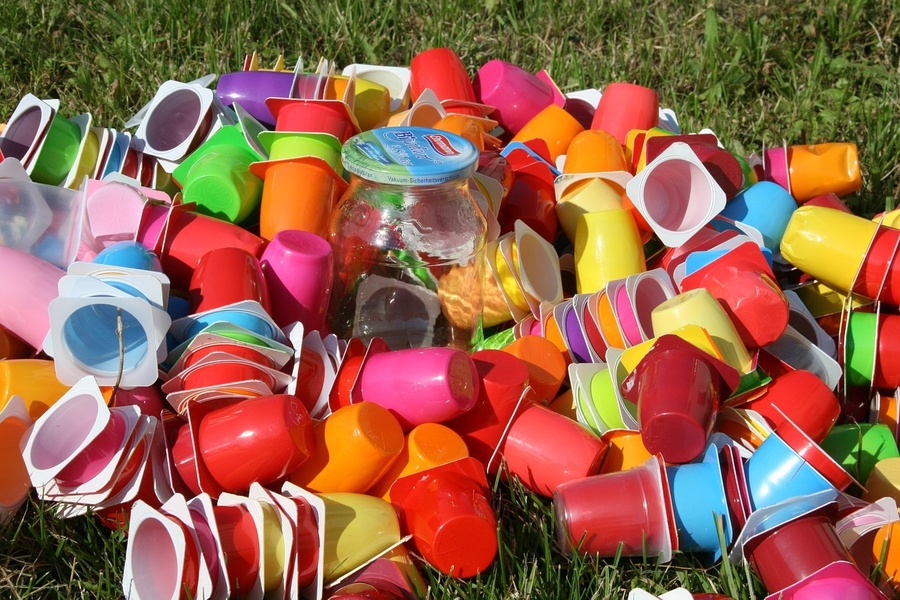
Plastics and Parenting
9 Jul 2020 | 6 min Read
resMOMsibility By Samriddhi
Author | 7 Articles
In most of my posts, I talk about how important it is to stay rooted to one’s culture, perhaps there’s always a hidden logic behind the societal do’s and don’ts suggested especially those pertaining to our food habits. When I conceived, I inclined more towards the reason why one is asked to cook food in iron or brass utensils and why an expectant mother should avoid food from outside, why should she avoid use of plastic etc. I have vivid memory of the day when I saw an advertisement which showcased its baby products being BPA (Bisphenol A) and Phthalates free. Not just these, there are many harmful chemicals which leach out from plastic objects which we are usually not aware of.
These can affect health, especially if the exposure occurs in the womb or during early childhood. Where are they usually present? The answer is everywhere! In your non-stick cookware, electronic household items, children plastic bottles (if not mentioned BPA free), recyclable plastic and cheap rubber toys, teethers, rattles, plastic cookware, take away food packs, recyclable plastics water bottles, adhesives, food packaging and children’s favourite straws… the list can go on and on. Plastic is everywhere, no matter how harmless this material appears to be, the chemical compounds it posses are not! and like many parents, I worry about the danger it poses to my kids’ health; instead of having a panic attack, we can be better informed to declutter and lead a little safer life because we can’t totally avoid exposure to such chemicals. So, here’s a list of chemicals to look out for in plastic items for all the mothers and care-takers
1. Bisphenols, such as BPA
They are used to make hard transparent plastic materials and can be found in soda cans, recyclable plastics with the number 3 or 7, plastic baby bottles and sippy cups; manufactured by companies not certified safe by food and health related authorities. BPA gets absorbed in the body through ingestion (from diet or through suckling on by babes) and through skin, it acts like hormone estrogen and interfere with puberty, miscarriage & fertility… and are also associated with higher risk of breast cancer… hyperactivity and allergic asthma in children.
2. Phthalates and Poly Vinyl Chlorides (PVC’s)
They are concerned with making anything soft and tender to touch, even your skin. Found not just in plastic packaging and inflatable toys, but also in things like nail polish, hairsprays, moisturizing lotions, vinyl products (plastic that resembles soft fabric), local rubber shoes, soft plastic toys made of vinyl (those toys have a peculiar smell similar to liquid fuels), talcum powder and fragrances. Many Phathalates especially those used as additives in vinyl toys have been banned since 2009. Studies have shown phthalates lead to skin allergies, various forms of cancers and hampers in reproductive growth.
3. Perchlorate
This chemical also interferes with thyroid function, and can disrupt early brain development. It’s found in some dry food packaging it is used to decrease static electricity and sometimes in drinking water when leached through plastic bottles exposed to sunlight for long.
How can a parent avoid exposure to such chemicals?
- Buy and serve more fresh or frozen fruits and vegetables, and fewer processed meats, foods with preservatives especially during pregnancy.
- Since heat can cause plastics to leak BPA and phthalates into food, avoid microwaving food or beverages in plastic containers. Also: wash plastics by hand rather than putting them in the dishwasher.
- Use gas stove and metal utensils to cook and heat your good instead of microwave ovens.
- Use more glass, brass, copper, silver and stainless steel instead of plastic.
- For children, buy toys and baby cosmetics from good brands which pass all the certifications from regulatory authorities.
- Instead of using plastic teethers or other pacifiers, try to go the old fashioned way with Wooden Muthiya (I did for my son).
- Try not to rely on infant and baby feeding bottles, but if utmost necessary, use bottles and breast milk bags made up of silicon instead.
- Use detergents, household cleaning items which are marked “safe for baby”.
- Try going natural or homemade DIY’s
- For skin and hair care especially when you are pregnant e.g. use natural henna instead of hair and nail colors, kitchen items for skin care like olive oil, fresh milk, oats or besan scrub etc.
- Instead of using plastic containers at home, use steel or glassware, or if you have to have plastic containers, there are some harmless plastics as proven by studies like high density polyethylene (HDPE) and the newly invented Bioplastics.
Click here to view My instagram handle resMOMsibility
Buy BabyChakra Products: http://babyc.in/l/XP5p Get 10% discount use code:10COM
Buy BabyChakra Products: http://babyc.in/l/XP5p Get 10% discount use code:10COM
Disclaimer: While BabyChakra strives to keep the content that it posts on website and app accurate, complete, and up-to-date, BabyChakra cannot guarantee, and is not responsible for, the accuracy, completeness, or timeliness of any Content, whether provided by BabyChakra, its Providers or Users of the Website or App. Any shares, credits or distribution of this content should be done with due credits to BabyChakra and the author/owner.
A


Related Topics for you
Suggestions offered by doctors on BabyChakra are of advisory nature i.e., for educational and informational purposes only. Content posted on, created for, or compiled by BabyChakra is not intended or designed to replace your doctor's independent judgment about any symptom, condition, or the appropriateness or risks of a procedure or treatment for a given person.
